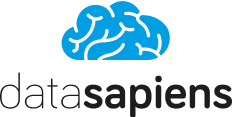From Customer Intelligence to Intelligent Growth
Introduction
In last week’s blog, we introduced our approach to business intelligence. We start with the strategy, align measures that reflect the achievement of the strategic goals, support KPIs with free-flow analytics to understand the “why?” and disseminate at each level of the organisation to ensure alignment.
However, incorporating customer insights into this mix makes the approach even more "intelligent." Enter customer analytics or customer intelligence.
In today's dynamic retail landscape, customer intelligence indeed reigns supreme. Understanding consumer behaviour, preferences, and patterns has become paramount for retailers looking to stay ahead of the competition and foster long-lasting relationships with their customers. One invaluable resource for gaining these insights is customer data derived from loyalty programmes or other unique identifiers. This data represents a gold mine of information waiting to be unearthed.
Customer Intelligence
Customer Intelligence is like having a whole new lens on the business. Understanding the business from the customers’ perspective, through their shopping behaviour in-store and online, their preferences for products, brands and stores, and their attitudes and interests, unveils a whole host of opportunities across the business. As with the example last week, this understanding is translated into a customer strategy that typically involves the following components:
Reward and retain your most loyal customers.
Stretch and grow your opportunity customers.
Win back or prevent lapsing customers, and
Acquire new customers.
With the strategy in place, decision-makers across the business have a whole new frame of reference and perspective to understand the business and make decisions on behalf of customers. Some examples of these insights include the following:
Sales Tree: Provides insight into how department/category/brand performance has changed in comparison to the previous period and which factors (customer penetration, visit frequency, spend per unit, etc) are driving growth/decline.
KPI Tracker: Provides key metrics to understand business performance. It allows for weekly changes to be assessed and customer behaviour tracking over time for selected product categories.
Promotion Performance: Measures the impact of your promotions on sales, quantity, number of customers, or shopping frequency. It allows you to identify successful and non-successful promotions.
Switching, Gain & Loss: Measures the impact of new, lost and retained customer sales changes in a post-period compared to a prior period. Switching analysis explains the interactions amongst brands. It is used to assess the impact of events on the business and whether the brand is winning or losing against the competition.
Affinities: Provides insight into what customers buy together in the same basket and the monetary value of the selection when products are purchased together or separately.
Cross-Purchase: Measures how customers shop across multiple categories or brand groupings during the set period.
Customer Profiler: Provides insight into who is buying your product. This report shows which buyer segments are more or less likely to purchase a particular product group.
Report Builder: Create your customised report from scratch and save it as a scenario for future usage.
With a new understanding of customer behaviour – why customers are changing their behaviour – decision-makers can take action using several key levers and applications: Price, Promotion, Assortment and Media.
From Insights to Action
Price
Known Value Items (KVIs) are critical. They are the items that are most important to your most important customers. If you get these wrong, your customers will start switching to other brands and products or, in the worst case, to your competitors and lapse from your store. At datasapiens, we agree on the approach to KVI generation and refresh with our clients. However, typical factors include customer loyalty, price sensitivity, promotion/non-promotion weight, item appeal, exclusivity, substitutability, sales weight, etc.
Promotion
Promotion is a considerable expense for retailers and brands alike. Much of this is wasted. The questions are how much is wasted, and on which promotions? To answer these questions, it is essential to understand the factors influencing promotion performance. This data produced by retailers can be mind-boggling and arises owing to the number of dimensions involved:
Mechanic: Price-off, % off, Multi-save, Cross-Sell, etc.
Media: Brochure, Newspaper, TV, in-store, online, etc.
Duration: Day, Date, Range, Period, etc.
Location: Generic, Regional, Location Specific.
Customer: Mass, Segment or Personalised
Competitor: Price and Promotion.
At datasapiens, we seek to understand the impact on the customer pre-, during-, and after-promotion to determine the net effect. We classify promotions based on those good for customers vs those good for the business, resulting in a four-block matrix. Reducing poor promotions (unsuitable for either the customer or the company) can result in significant savings in terms of promotional investment. This saving can be banked, re-invested in good promotions to make them even better, or invested in other areas, for example, base price or personalised media.
Assortment
Curating the right assortment is the foundation of retailing, so it is essential to put the customer at the heart of the process and combine their behaviour and preferences with business performance. Some of the critical metrics and levers are as follows:
Exclusivity: This fact measures the extent to which an item is the only item in the customers' repertoire from the category. The higher the exclusivity, the greater the importance to the customer, as there is no alternative. These items must be protected as deletion will result in lost sales, reducing overall purchasing repertoire and leakage to the competition.
Substitutability: This fact measures the extent to which one item may be substituted for another within the category. A high level of substitutability indicates a low level of customer loyalty to the item or brand; if the item is unavailable, the customer can easily select an alternative. This presents a trading opportunity.
Trading: Good-selling items aren't necessarily the best if they are highly substitutable. Imagine two second-tier brands with good-selling items that are highly substitutable. Customers are not loyal to either; they will happily switch between them. The buyer can choose the item to keep on the shelf, while the suppliers can bid to stay. This can result in an incremental margin aligned to a Joint Business Plan JBP with a supplier, a lower retail price for customers at the same margin, or other options.
Customer Centricity: The example above shows how customer metrics can drive business performance. In reality, customer focus is much greater, from product scoring by customer profile to localisation based on customer profile, shopping mission or regional nuance. The result can be unique assortments by store.
Business Impact: The combination of customer centricity with hard business metrics related to sales and margin delivers growth.
Media
Off-site media allows retailers and brands to connect directly with their customers on the open web, with ads tailored to the customer profile and in-store behaviour.
At datasapiens, we enable decision-makers to create unique customer segments or audiences based on the issues and opportunities identified with Customer Intelligence analytics. Segments can be created in real time by combining strategic segments with all available facts, dimensions, and time periods.
Resulting segments may be exported to partner media operators for execution, while results from executed campaigns are fed back to the datasapiens platform for closed-loop evaluation.
Collaboration & Growth
Collaboration – both internal and external – is the big accelerator when it comes to adopting and applying customer insights to drive the business. With datasapiens, collaboration is maximised through a sophisticated permission system that enables refined control over every fact and dimension. This means business owners are in total control of their data.
Collaboration with their suppliers creates a win-win scenario for all parties involved. By sharing anonymised insights with their suppliers, our clients provide valuable market intelligence, enabling suppliers to optimize their product offerings, pricing, and promotional strategies to align with consumer demand.
This strategic alignment between the retailer and its suppliers strengthens a mutual relationship and fuels increased sales and customer satisfaction.
The cherry on the cake is that collaboration can generate >100% ROI via supplier subscriptions, and that takes into consideration an extensive dedicated team that supports both the internal operation and client solutions team servicing dozens of manufacturers. We are proud that our clients are engaged:
User satisfaction: 85.9%
Commercial usage: 80.3%, +7pp year on year
Store manager usage: 98%, at least three times per week
User preference for datasapiens vs. the competition: +32.2pp
Conclusion
Customer Intelligence enables intelligent business growth by putting the customer at the heart of decision-making. Organisations can move from broad-based spending to focussed investment in strategic customer initiatives, from KVI pricing to local assortment and promotion effectiveness through to personalised communications.
This intelligence is accelerated through collaboration around aligned objectives and a single source of truth. This collaboration is typically self-funded and delivers a positive ROI.
Get in touch if you’d like to learn more about how datasapiens empowers insightful decisions for everyone, quickly and effectively.





